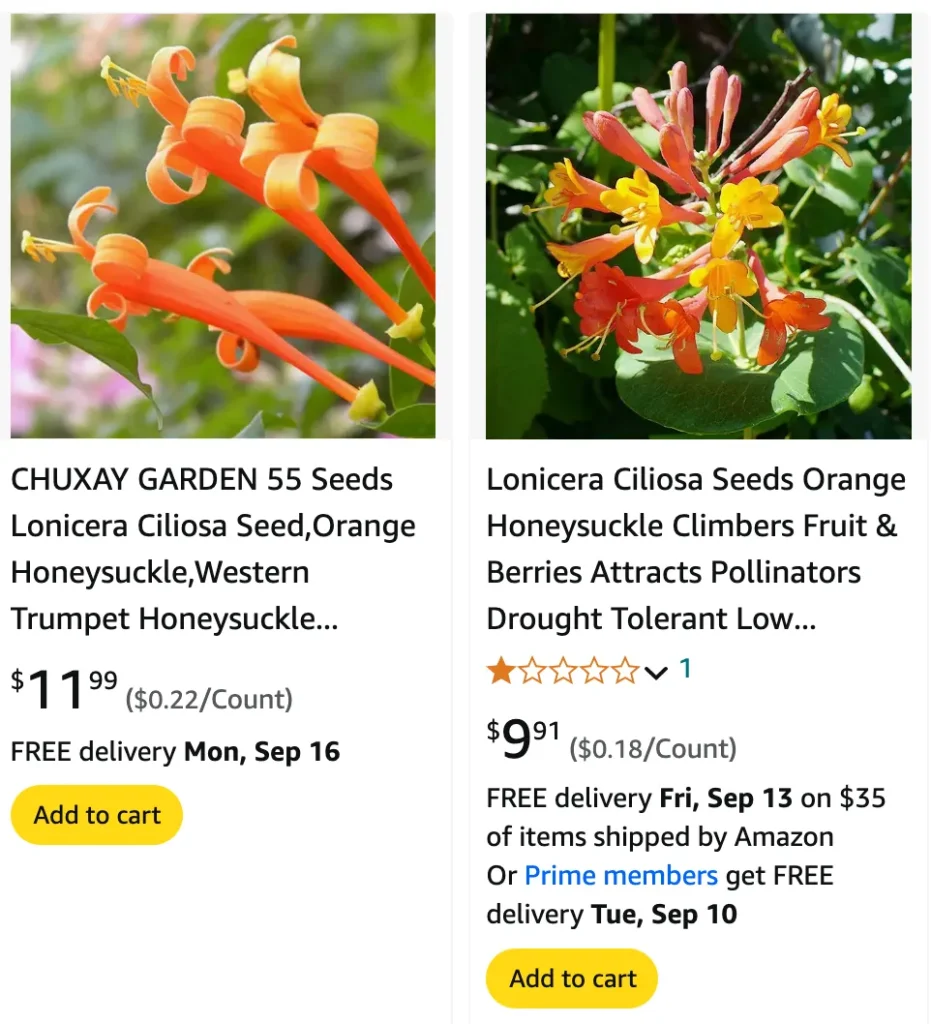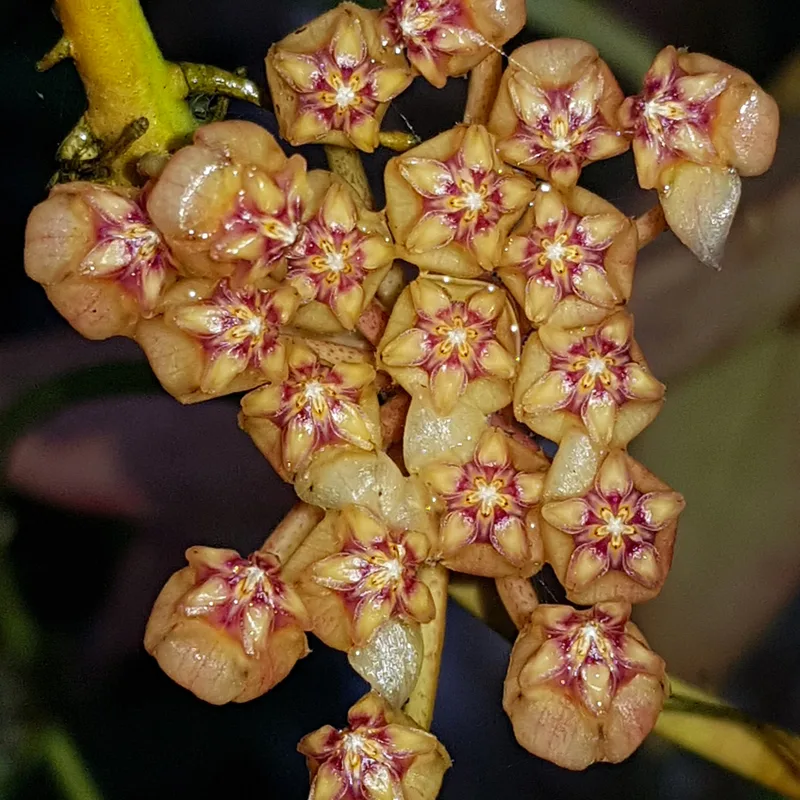
FAQs About Lonicera Ciliosa: My Experience with This Beautiful Honeysuckle
Lonicera Ciliosa, commonly known as Orange Honeysuckle, has been a delight in my garden for years. This climbing vine, native to western North America, brings vibrant beauty and a touch of wild nature to any outdoor space. I’ve received many questions about this plant, so I’m excited to share what I know from my personal experience.
162 Species in Genus Lonicera
What is Lonicera Ciliosa?
Lonicera Ciliosa is a deciduous vine known for its orange-yellow tubular flowers that attract hummingbirds and butterflies. It can grow up to 18 feet tall, making it perfect for trellises, fences, or natural climbing. The flowers bloom from late spring to early summer, and the plant produces bright red berries in the fall.
Can Lonicera Ciliosa Be Transplanted?
Yes, Lonicera Ciliosa can be transplanted, but timing is important. I’ve had the best results transplanting this honeysuckle in the early spring or late fall when the plant is dormant. You want to make sure the roots are well-established before it faces the heat of summer or the chill of winter. When transplanting, I recommend digging up as much of the root system as possible and keeping the soil moist for a few weeks afterward.
Is Lonicera Ciliosa Scented?
Lonicera Ciliosa is not heavily scented, unlike some other honeysuckle varieties. While you might expect a strong fragrance from the honeysuckle family, this variety has a mild, almost unnoticeable scent. Personally, I find its visual appeal—those fiery orange blooms—more than make up for the lack of fragrance. Plus, the wildlife it attracts, like hummingbirds and butterflies, adds a lively atmosphere to any garden.
Where to Buy Lonicera Ciliosa?
Finding Lonicera Ciliosa can be a bit tricky depending on where you live. I’ve had the most luck purchasing it from native plant nurseries or specialized online sellers who focus on regional plants. Many big-box stores don’t carry it, but checking local botanical gardens or online marketplaces might lead you to the right source. Always be sure to buy from reputable sellers who avoid harmful pesticides or practices that could damage the plant.
How to Care for Lonicera Ciliosa?
Caring for Lonicera Ciliosa is quite easy, even for a novice gardener. In my experience, this vine thrives in full sun to partial shade, and well-draining soil is a must. It’s not too picky about soil type, but I’ve found it grows best in slightly acidic to neutral soil. Water it regularly during its first year to establish the roots, but once it’s established, it can tolerate some drought.
For pruning, I usually trim back dead or overgrown branches in the late winter or early spring before new growth starts. This keeps the plant tidy and encourages more blooms.
How to Propagate Lonicera Ciliosa?
Propagating Lonicera Ciliosa is fairly simple. I’ve had success with both seed and cutting methods. If you choose to propagate from seeds, collect them in the fall once the berries have ripened, and sow them in a well-draining potting mix. Keep the soil moist and wait for germination in spring.
For cuttings, I typically take softwood cuttings in the late spring or early summer. Dip the cuttings in rooting hormone and plant them in moist soil. Keep the cuttings in a shaded area until they root, usually within a few weeks.
Can Lonicera Ciliosa Be Grown Indoors?
While Lonicera Ciliosa can technically be grown indoors, I wouldn’t recommend it unless you have a large space with plenty of sunlight. This vine is naturally vigorous, and it thrives outdoors where it can climb and spread. I’ve seen attempts to grow it indoors, but it tends to get leggy and doesn’t flower as abundantly as when grown outdoors. If you really want to try it inside, a greenhouse or sunroom might offer the best conditions.
Is Lonicera Ciliosa Toxic?
Lonicera Ciliosa is considered non-toxic to humans, but its berries can cause mild discomfort if ingested. I’ve never had any issues with it, but it’s always wise to keep children and pets from eating the berries. On the other hand, the birds in my garden love them, which adds to the plant’s appeal.
Benefits of Lonicera Ciliosa
One of the greatest benefits of Lonicera Ciliosa is how it attracts pollinators like hummingbirds, butterflies, and bees. These creatures bring life and energy to the garden, and the orange blossoms are a magnet for them. I also love how this plant serves as a natural privacy screen when trained along a fence or trellis.
Common Problems with Lonicera Ciliosa
While Lonicera Ciliosa is a hardy plant, it’s not immune to problems. I’ve noticed powdery mildew can become an issue if the plant is in a very humid or poorly ventilated area. Keeping the plant well-spaced and ensuring good air circulation has helped me avoid this. Aphids can also be a nuisance, but a simple spray of insecticidal soap usually does the trick.
What Can You Plant with Lonicera Ciliosa?
Lonicera Ciliosa pairs beautifully with other native plants. I’ve had success planting it alongside ferns, salal, and Oregon grape in my garden. The green foliage of these plants creates a lovely contrast with the orange blooms. I also like to plant it near other climbing plants, like Clematis, for a vibrant, layered effect.
Lonicera Ciliosa vs. Other Honeysuckles
I’ve often been asked how Lonicera Ciliosa compares to other honeysuckles. The most notable difference is its lack of fragrance compared to varieties like Lonicera Japonica. However, I prefer Lonicera Ciliosa for its ease of care and the wildlife it attracts. It’s also less invasive than Lonicera Japonica, which can become a problem in some regions.
Final Thoughts
Lonicera Ciliosa has been a great addition to my garden, providing both beauty and a habitat for pollinators. While it might not have the strong fragrance of other honeysuckles, its striking flowers and easy maintenance make it a winner in my book. If you’re looking for a native vine to add to your garden, I highly recommend giving Lonicera Ciliosa a try.
If i die, water my plants!



